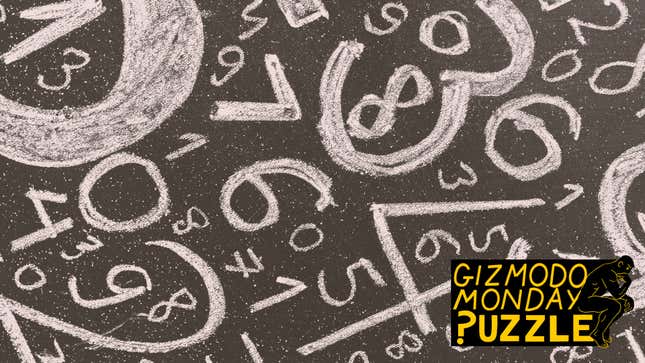
You know that I love puzzles. And I know that you know that I love puzzles. Does it follow that you know that I know that you know that I love puzzles? No? Philosophers examine questions like this in the study of common knowledge. To solve this week’s puzzle, you’ll need to peer inside others’ minds and deduce what those minds know about other minds. Does your mind hurt yet? You know I know it does.
Did you miss last week’s puzzle? Check it out here, and find its solution at the bottom of today’s article. Be careful not to read too far ahead if you haven’t solved last week’s yet!
Puzzle #6: Know Your Numbers
Alicia and Bruno are each given a different natural number in secret (1 is the smallest natural number, 2 is the second smallest, and so on). They are then tasked with guessing which of them has the larger number. The following conversation ensues:
Alicia: I don’t know who has the bigger number.
Bruno: I don’t know either.
Alicia: Upon further reflection, I remain ignorant.
Bruno: Alas, I’m still unsure too.
Alicia: Now that you say that, I actually know which of us has the bigger number!
Bruno: Cool! In that case, I know what both of the numbers are.
What numbers were Alicia and Bruno given?
Common knowledge concerns not only what you know, but what you know about what others know about what you know, and so on. It may seem esoteric, but when taken to its logical extreme, common knowledge has bizarre consequences and serves as the basis for many puzzles and even real-world engineering hurdles.
Consider the infamous Two Generals’ Problem. Two generals (let’s call them A and B) belong to the same army, but their troops have been split up and enemy territory separates them. If A’s troops and B’s troops attack the enemy camp at the same time, then they’ll win, but if only A attacks or only B attacks, it won’t be enough to overcome the enemy army, and they’ll lose. So A and B must agree on a time to attack together, and the only way to communicate is to send messages through enemy land that could get intercepted. Here’s how it plays out:
General A writes a message saying, “Let’s both attack at noon tomorrow. Please confirm that you received this message so I know the plan is on.”
General B receives this and replies, “Message received. We’ll attack at noon tomorrow. Please confirm that you received this so I know the plan is on.”
B needs confirmation from A, because if B’s message never delivers, then A won’t know that B agreed to the plan and won’t attack. So if B doesn’t get a confirmation back, he can’t be sure that the plan is on. You probably see where this is headed.
General A: “Yes, I got your message saying that you’re down to attack at noon. So we’re on. Please confirm that you’ve received this.”
B needed this confirmation and wouldn’t attack without it. So of course A needs to know that B got the confirmation he needed so that A isn’t alone at noon tomorrow. This reasoning carries on forever, with each general requiring confirmation from the other in order to be completely assured that they agree.
This isn’t just logical sleight of hand. The Two Generals’ Problem demonstrates a real issue with designing computer protocols when we need two machines to reach consensus by communicating over a potentially noisy channel. How do we guarantee agreement? The answer: we can’t. No algorithm can overcome this barrier, and instead computer scientists recognize it as a limitation of computing networks. Unlike the Two Generals’ Problem, the Gizmodo Monday Puzzle has a solution. Please confirm when you’ve solved it.
Do you know a great puzzle that I should cover here? Send it to me at [email protected]
Solution to Puzzle #5: Strange Syllables
Last week, I gave you a couple of verbal challenges. First, I asked you to find one-syllable words that become three-syllable words when one letter is added to the end of them. Shout-out to commenter fffuuuuu, who got all three:
- rode -> rodeo
- came -> cameo
- are -> area
If we were allowed to add the new letter anywhere rather than just the end, then smile -> simile makes for a nice addition to the list. If we accepted proper nouns, we could include ore -> Oreo.
Were you able to find four two-syllable words that are all homophones of each other? Joost Dantuma wrote to me with a clean example of a trio of two-syllable homophones: palette, palate, and pallet. The answer with four homophones is: carrot, karat, carat, and caret. A “karat” is a unit of the purity of gold, a “carat” is a unit of weight used for diamonds, and a “caret” is the typographical mark ^ above the 6 on most keyboards. One alternate answer that some have put forth is medal, meddle, metal, and mettle, however official pronunciations for these words put different sounds on the t’s and the d’s.

